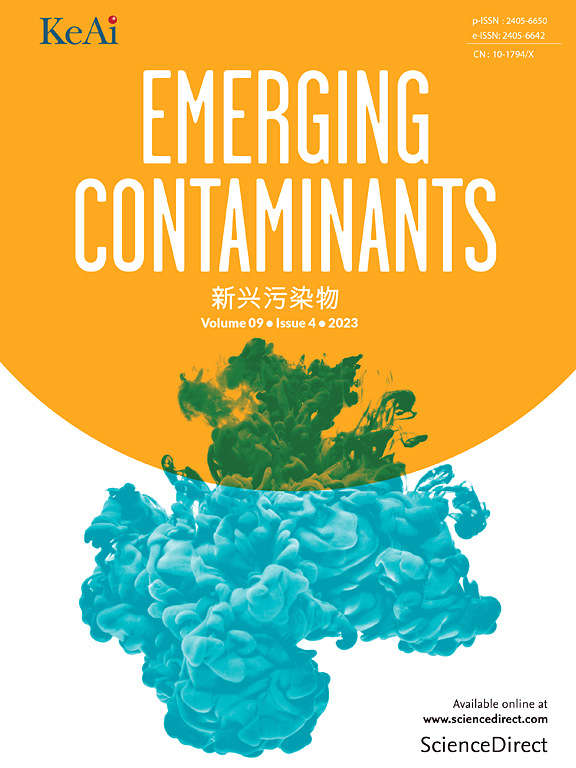Veterinary antibiotics in contaminated animal manure: Fate, removal challenges, and future perspectives on conventional and emerging technologies
IF 6.9
2区 环境科学与生态学
Q1 ENVIRONMENTAL SCIENCES
引用次数: 0
Abstract
The pollution caused by veterinary antibiotics (VAs) has become a global concern due to their role in promoting antimicrobial resistance in the environment. Animal manure, often referred to as animal slurry, contains substantial amounts of VAs originating from animal urine and feces. Since animal manure is commonly used as a nutrient-rich fertilizer, understanding the degradation of VAs and ensuring their efficient removal are essential for effective manure management. This article critically reviews the emerging technologies effective in VA removal, such as adsorption, membrane separation, advanced oxidation processes, carbonization, and bioelectrochemical systems. While these technologies have been extensively studied for their ability to remove pharmaceuticals from common water and wastewater, their applicability to real manure treatment remains insufficiently explored. This article outlines the challenges associated with each technology, particularly concerning the complex composition of animal manure. It highlights the potential of these technologies as supplementary or post-treatment options to improve VA removal, particularly during periods of high VA usage for therapeutic purposes. Finally, the article offers several recommendations, including advancements in animal manure collection, the importance of VA removal to mitigate antimicrobial resistance, and the potential for integrating multiple technologies to optimize VA removal.

受污染动物粪便中的兽医抗生素:命运,去除挑战,以及对传统和新兴技术的未来展望
兽医用抗生素(VAs)引起的污染已成为全球关注的问题,因为它们在环境中促进了抗菌素耐药性。动物粪便,通常被称为动物粪便,含有大量来自动物尿液和粪便的输精管。由于动物粪便通常被用作一种营养丰富的肥料,因此了解增值肥料的降解并确保其有效去除对于有效的粪便管理至关重要。本文综述了有效去除VA的新兴技术,如吸附、膜分离、高级氧化工艺、碳化和生物电化学系统。虽然这些技术已经被广泛地研究了它们从普通水和废水中去除药物的能力,但它们在真正的粪便处理中的适用性仍然没有得到充分的探索。本文概述了与每种技术相关的挑战,特别是关于动物粪便的复杂组成。它强调了这些技术作为辅助或治疗后选择来改善VA去除的潜力,特别是在用于治疗目的的高VA使用期间。最后,本文提出了一些建议,包括动物粪便收集的进展,去除VA对减轻抗菌素耐药性的重要性,以及整合多种技术优化VA去除的潜力。
本文章由计算机程序翻译,如有差异,请以英文原文为准。
求助全文
约1分钟内获得全文
求助全文
来源期刊

Emerging Contaminants
Medicine-Public Health, Environmental and Occupational Health
CiteScore
10.00
自引率
6.70%
发文量
35
审稿时长
44 days
期刊介绍:
Emerging Contaminants is an outlet for world-leading research addressing problems associated with environmental contamination caused by emerging contaminants and their solutions. Emerging contaminants are defined as chemicals that are not currently (or have been only recently) regulated and about which there exist concerns regarding their impact on human or ecological health. Examples of emerging contaminants include disinfection by-products, pharmaceutical and personal care products, persistent organic chemicals, and mercury etc. as well as their degradation products. We encourage papers addressing science that facilitates greater understanding of the nature, extent, and impacts of the presence of emerging contaminants in the environment; technology that exploits original principles to reduce and control their environmental presence; as well as the development, implementation and efficacy of national and international policies to protect human health and the environment from emerging contaminants.
 求助内容:
求助内容: 应助结果提醒方式:
应助结果提醒方式:


